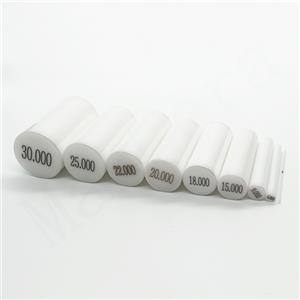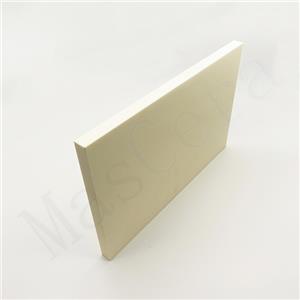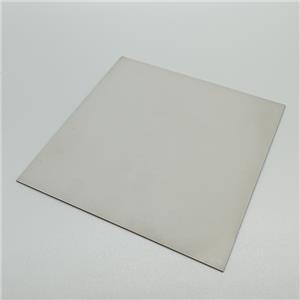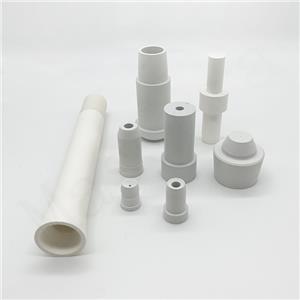Ceramic Bulletproof Series - Principles and Application Fields of Bulletproof
With the development of technology, the destructive power of modern weapons is becoming stronger, and people's attention to bulletproof materials is increasing. Advanced ceramics have the characteristics of high strength, high hardness, low density, corrosion resistance, and high wear resistance. Compared with metal bulletproof materials, they are lighter in weight and have smaller loads, which is extremely advantageous in individual bulletproof equipment such as bulletproof vests.
1.Bulletproof principle of advanced ceramics
The basic principle of armor protection is to consume bullet energy, decelerate the bullet, and make it harmless. Unlike traditional materials such as metal materials that absorb energy by undergoing plastic deformation through structure to achieve protection, advanced ceramic materials achieve protection by the micro-shattering process system energy. The energy absorption process can be roughly divided into three stages:

(1) Initial impact stage: The bullet hits the ceramic surface, making the bullet head blunt and absorbing energy in the process of crushing the ceramic surface to form a small and hard fragment area.
(2) Erosion stage: The blunt bullet continues to erode the fragment area, forming a continuous layer of ceramic fragments.
(3) Deformation, cracking, and fracture stage: Finally, tensile stress is generated in the ceramic, causing the ceramic to fracture, and then the backplate deforms, and all the remaining energy is absorbed by the deformation of the backplate material. During the process of the bullet hitting the ceramic, both the bullet and the ceramic are damaged.
2.Bulletproof application fields of advanced ceramics
The human bulletproof vest is a protective equipment commonly used by individual soldiers, armed police
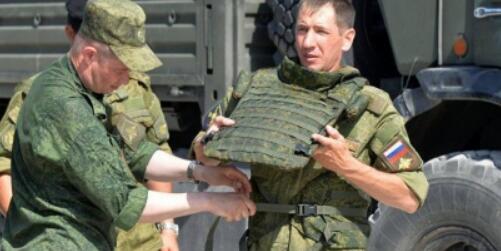 , security guards, and armed escorts. It is a military-civilian dual-use product. The core component of the human bulletproof vest is the bulletproof insert plate. The insert plate material has gone through hard metal insert plates, soft synthetic fiber insert plates, and has now developed to the third generation of ceramic/synthetic fiber composite insert plates, which is the main development direction of bulletproof vests at present.
, security guards, and armed escorts. It is a military-civilian dual-use product. The core component of the human bulletproof vest is the bulletproof insert plate. The insert plate material has gone through hard metal insert plates, soft synthetic fiber insert plates, and has now developed to the third generation of ceramic/synthetic fiber composite insert plates, which is the main development direction of bulletproof vests at present.
The bulletproof insert plate is mainly divided into two parts: one is the backplate made of aramid or ultra-high molecular weight high-strength and high-modulus polyethylene fiber composite material, and the other is the bulletproof panel made of alumina, silicon carbide, and boron carbide. The two are combined through a transition adhesive layer and a layer of crack-stopping cloth is pasted on the surface of the ceramic panel to prevent harm to the human body when the ceramic is shattered, resulting in the third generation of composite bulletproof insert plates.
(2) Vehicle armor protection
Armor is an indispensable part of battlefield vehicles, otherwise, they would not survive in the battlefield with continuous gunfire. In the past, armor was mostly made of st eel plates. However, with the gradual upgrading of bullet materials and performance, armor materials are facing huge challenges. For example, the bullets used in armor-piercing bullets currently use high-density alloy steel, tungsten carbide, or tungsten, depleted uranium alloy steel, etc., with an initial speed of 0.9~1.8 km/s, a piercing thickness of more than 1 meter, strong piercing ability, small flight speed loss, and high threat.
eel plates. However, with the gradual upgrading of bullet materials and performance, armor materials are facing huge challenges. For example, the bullets used in armor-piercing bullets currently use high-density alloy steel, tungsten carbide, or tungsten, depleted uranium alloy steel, etc., with an initial speed of 0.9~1.8 km/s, a piercing thickness of more than 1 meter, strong piercing ability, small flight speed loss, and high threat.
Although the speed of the armor-piercing bullet is not high, its use of the energy-gathering principle of the conical hollow charge of the explosive forms a high-speed metal jet upon explosion, which can easily penetrate armor. In the field of vehicle armor protection, ceramic armor has gradually replaced steel armor, becoming an important armor material.

